Adrian Mole meets Bloomsbury
Richard Kennedy started work at the Hogarth Press when he was sixteen. He had been a complete failure at Marlborough School, and was fixed up with the job through a family connection as a special favour, starting work at one pound a week. His memoirs (and atmospheric line illustrations) were produced many years later, and they take great delight in contrasting the youth’s naive enthusiasm and his bewilderment with the sophisticated milieu into which he had been transported.
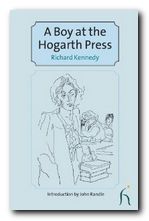 Leonard Woolf ran an enterprise in the Hogarth Press which was commercially very successful, and Kennedy joined it at a time in the 1920s when the work of Virginia Woolf (particularly Orlando) and Vita Sackville-West (All Passion Spent) were virtually best-sellers. But his approach is to depict these intellectual giants as they were seen by a sixteen year old boy. He was far more interested in learning how to chat up girls than the lofty aspirations of his employers. He contrives to present an ‘Emperor’s New Clothes’ approach to all things Bloomsbury, and the result is a sort of Adrian Mole version of events.
Leonard Woolf ran an enterprise in the Hogarth Press which was commercially very successful, and Kennedy joined it at a time in the 1920s when the work of Virginia Woolf (particularly Orlando) and Vita Sackville-West (All Passion Spent) were virtually best-sellers. But his approach is to depict these intellectual giants as they were seen by a sixteen year old boy. He was far more interested in learning how to chat up girls than the lofty aspirations of his employers. He contrives to present an ‘Emperor’s New Clothes’ approach to all things Bloomsbury, and the result is a sort of Adrian Mole version of events.
The saintly Virginia Woolf, who at that time was producing some of the most advanced texts of literary modernism, is pictured as she would appear to a young teenager:
She looks at us over the top of her steel-rimmed spectacles, her grey hair hanging over her forehead and a shag cigarette (which she rolls herself) hanging from her lips. She wears a hatchet-blue overall and sits hunched in a wicker armchair with her pad on her knees and a small typewriter beside her.
His employer, the indefatigable Leonard Woolf, who ran the whole enterprise with rigorous efficiency, is cut down to size in a similar fashion:
After lunch we all straggled home over the Downs. LW stopped to have a pee in a very casual way without attempting any sort of cover. I could see that this was a part of his super-rational way of living.
But for all the naive self deprecation, you know that Kennedy is well connected. He is in fact from the same social milieu as the people he describes, as he reveals in a throwaway remark on a visit to St Ives::
The picnic over, we returned to Talland House – curiously enough, the scene of Virginia Woolf’s first successful novel, To the Lighthouse. Her parents had rented the house from my aunt’s parents .
The book is decorated by spidery but very evocative drawings which capture the mood of the era and the spirit of the text. Amazingly, they were drawn from memory in the 1970s, yet capture both the period and the principal characters very well.
It’s a slight book to say the least, but it’s very amusing and it throws light onto the workings of what was a very successful publishing business – and for Bloomsbury Group enthusiasts it has some delicious thumbnail sketches of the principals, as well as even floor plans of the rooms at the Hogarth Press, showing who was cooped up where. Full marks to Hesperus Press for bringing this delightful book back into print.
© Roy Johnson 2011
Richard Kennedy, A Boy at the Hogarth Press, London: Hesperus Press, 2011, pp.90, ISBN 1843914611
More on the Bloomsbury Group
More on biography
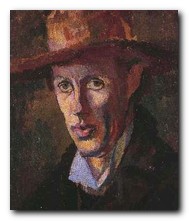
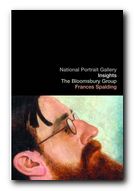 The Bloomsbury Group is a short but charming book, published by the National Portrait Gallery. It explores the impact of Bloomsbury personalities on each other, plus how they shaped the development of British modernism in the early part of the twentieth century. But most of all it’s a delightful collection of portrait paintings and photographs, with biographical notes. It has an introductory essay which outlines the development of Bloomsbury, followed by a series of portraits and the biographical sketches of the major figures.
The Bloomsbury Group is a short but charming book, published by the National Portrait Gallery. It explores the impact of Bloomsbury personalities on each other, plus how they shaped the development of British modernism in the early part of the twentieth century. But most of all it’s a delightful collection of portrait paintings and photographs, with biographical notes. It has an introductory essay which outlines the development of Bloomsbury, followed by a series of portraits and the biographical sketches of the major figures.
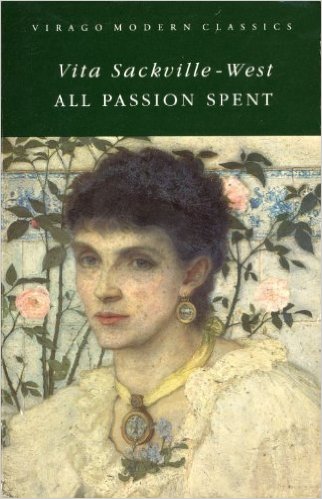
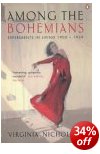
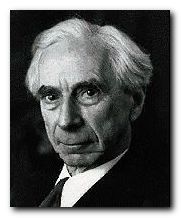 Bertrand Russell (1872-1970) was an unusual mixture of a popular and an academic philosopher. He was the inventor of The Theory of Descriptions. Like many philosophers he made his major contributions whilst quite young with The Principles of Mathematics (1903) and he followed this later with
Bertrand Russell (1872-1970) was an unusual mixture of a popular and an academic philosopher. He was the inventor of The Theory of Descriptions. Like many philosophers he made his major contributions whilst quite young with The Principles of Mathematics (1903) and he followed this later with 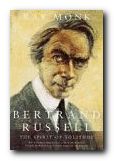
 The Art of Bloomsbury
The Art of Bloomsbury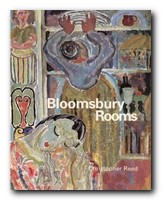 Bloomsbury Rooms: Modernism, Subculture, and Domesticity
Bloomsbury Rooms: Modernism, Subculture, and Domesticity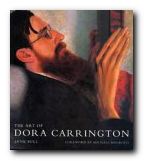 The Art of Dora Carrington
The Art of Dora Carrington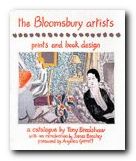 The Bloomsbury Artists: Prints and Book Designs
The Bloomsbury Artists: Prints and Book Designs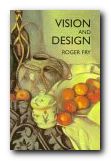 Vision and Design
Vision and Design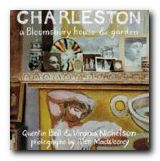 Charleston: A Bloomsbury House and Garden
Charleston: A Bloomsbury House and Garden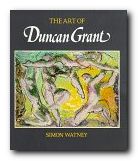 The Art of Duncan Grant
The Art of Duncan Grant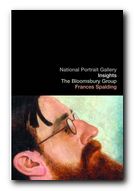
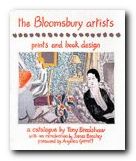
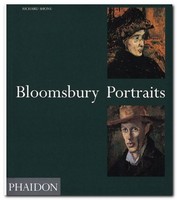 Bloomsbury Portraits is an updated and redesigned edition of Richard Shone’s study of the painters of the Bloomsbury group.
Bloomsbury Portraits is an updated and redesigned edition of Richard Shone’s study of the painters of the Bloomsbury group. 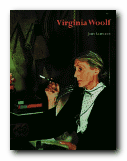 Virginia Woolf is a readable and well illustrated biography by John Lehmann, who at one point worked as her assistant at the
Virginia Woolf is a readable and well illustrated biography by John Lehmann, who at one point worked as her assistant at the 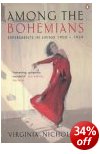 Among the Bohemians: Experiments in Living 1900—1930 was written by Virginia Nicholson, Quentin Bell’s daughter and grand-daughter of Vanessa Bell, who was Virginia Woolf’s sister. Bloomsbury lies at the heart of the book in its portraits of Ralph Partridge, Virginia Woolf, Duncan Grant,
Among the Bohemians: Experiments in Living 1900—1930 was written by Virginia Nicholson, Quentin Bell’s daughter and grand-daughter of Vanessa Bell, who was Virginia Woolf’s sister. Bloomsbury lies at the heart of the book in its portraits of Ralph Partridge, Virginia Woolf, Duncan Grant, 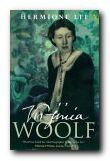 Virginia Woolf, a biography by Hermione Lee is strongly recommended if you would prefer something more advanced and intellectually demanding. It assumes you know the general background to her life and the Bloomsbury group. Lee writes from an academic perspective, and extricates Woolf from clichs about madness and modernism to reveal a vigorous artist whose work is politically probing as well as psychologically delicate. This is one for the serious literary scholar – but it’s nevertheless very readable.
Virginia Woolf, a biography by Hermione Lee is strongly recommended if you would prefer something more advanced and intellectually demanding. It assumes you know the general background to her life and the Bloomsbury group. Lee writes from an academic perspective, and extricates Woolf from clichs about madness and modernism to reveal a vigorous artist whose work is politically probing as well as psychologically delicate. This is one for the serious literary scholar – but it’s nevertheless very readable.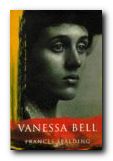 Vanessa Bell, Francis Spalding’s excellent biography, sets out a portrait of this complex and talented woman who sacrificed a great deal of her time and efforts to looking after other people. She managed to stay on friendly terms with her lover, her husband, and her ex-lover – and to keep them friendly with each other. At the same time she was an active member of the
Vanessa Bell, Francis Spalding’s excellent biography, sets out a portrait of this complex and talented woman who sacrificed a great deal of her time and efforts to looking after other people. She managed to stay on friendly terms with her lover, her husband, and her ex-lover – and to keep them friendly with each other. At the same time she was an active member of the 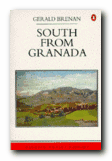 South from Granada is a travel writing classic in which the writer and cultural historian
South from Granada is a travel writing classic in which the writer and cultural historian 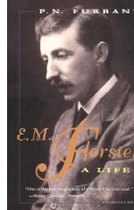 E.M.Forster: A Life is a readable and well illustrated biography by P.N. Furbank. This book has been much praised for the sympathetic understanding Nick Furbank brings to Forster’s life and work, as well as to his relationships with other members of the Bloomsbury Group. He produced his now-classic novels whilst he was quite young, gave up writing fiction, and devoted his later years to political essays and literary criticism. This is also a very scholarly book, with plenty of fascinating details of the English literary world during Forster’s surprisingly long life. Very well written too.
E.M.Forster: A Life is a readable and well illustrated biography by P.N. Furbank. This book has been much praised for the sympathetic understanding Nick Furbank brings to Forster’s life and work, as well as to his relationships with other members of the Bloomsbury Group. He produced his now-classic novels whilst he was quite young, gave up writing fiction, and devoted his later years to political essays and literary criticism. This is also a very scholarly book, with plenty of fascinating details of the English literary world during Forster’s surprisingly long life. Very well written too. A Life of Dora Carrington 1893-1932 Because of her Bohemian lifestyle, her connection with the Bloomsbury group, her bobbed hair, and her outspoken views,
A Life of Dora Carrington 1893-1932 Because of her Bohemian lifestyle, her connection with the Bloomsbury group, her bobbed hair, and her outspoken views,  Portrait of a Marriage is a double biography of
Portrait of a Marriage is a double biography of 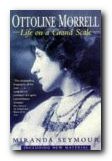 Ottoline Morrell: Life on a Grand Scale This biography reveals Ottoline Morrell, London’s leading literary hostess during the first three decades of the 20th century. Augustus John, the Asquiths, T.S. Eliot,
Ottoline Morrell: Life on a Grand Scale This biography reveals Ottoline Morrell, London’s leading literary hostess during the first three decades of the 20th century. Augustus John, the Asquiths, T.S. Eliot, 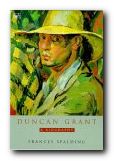 Duncan Grant – a Biography Francis Spalding’s book is the standard account of his life, which stretched from the Victorian age into the modern era. Duncan Grant was one of the best-known names on the British art scene and one of the most charismatic members of the Bloomsbury set. His life spanned great changes in society and art, from Edwardian times to the 1970s. Although he was a homosexual, he lived devotedly and worked throughout his life with fellow artist and former lover
Duncan Grant – a Biography Francis Spalding’s book is the standard account of his life, which stretched from the Victorian age into the modern era. Duncan Grant was one of the best-known names on the British art scene and one of the most charismatic members of the Bloomsbury set. His life spanned great changes in society and art, from Edwardian times to the 1970s. Although he was a homosexual, he lived devotedly and worked throughout his life with fellow artist and former lover 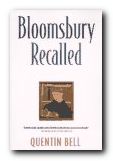 Bloomsbury Recalled Quentin Bell was one of the last surviving members of the Bloomsbury circle. Here he offers a candid portrait gallery of major and peripheral Bloomsbury figures. His father,
Bloomsbury Recalled Quentin Bell was one of the last surviving members of the Bloomsbury circle. Here he offers a candid portrait gallery of major and peripheral Bloomsbury figures. His father,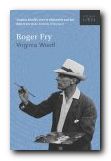 Roger Fry, Virginia Woolf’s authorised biography, traces the development of his aesthetic practice and theories – after first graduating in science from Cambridge. He was the oldest member of the Bloomsbury Group, and influenced much of its ideas concerning fine and decorative arts. In partnership with his one-time lover Vanessa Bell, he was the founder of the Omega workshop, and he became a leading art critic as well as a successful painter in his own right. Don’t expect any spicy personal details: Woolf concentrates on his aesthetic theories and his public life.
Roger Fry, Virginia Woolf’s authorised biography, traces the development of his aesthetic practice and theories – after first graduating in science from Cambridge. He was the oldest member of the Bloomsbury Group, and influenced much of its ideas concerning fine and decorative arts. In partnership with his one-time lover Vanessa Bell, he was the founder of the Omega workshop, and he became a leading art critic as well as a successful painter in his own right. Don’t expect any spicy personal details: Woolf concentrates on his aesthetic theories and his public life.